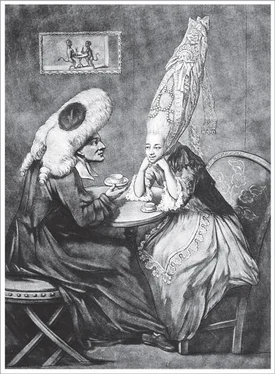Bill Bryson - At Home
Здесь есть возможность читать онлайн «Bill Bryson - At Home» весь текст электронной книги совершенно бесплатно (целиком полную версию без сокращений). В некоторых случаях можно слушать аудио, скачать через торрент в формате fb2 и присутствует краткое содержание. Жанр: Старинная литература, на английском языке. Описание произведения, (предисловие) а так же отзывы посетителей доступны на портале библиотеки ЛибКат.
- Название:At Home
- Автор:
- Жанр:
- Год:неизвестен
- ISBN:нет данных
- Рейтинг книги:4 / 5. Голосов: 1
-
Избранное:Добавить в избранное
- Отзывы:
-
Ваша оценка:
- 80
- 1
- 2
- 3
- 4
- 5
At Home: краткое содержание, описание и аннотация
Предлагаем к чтению аннотацию, описание, краткое содержание или предисловие (зависит от того, что написал сам автор книги «At Home»). Если вы не нашли необходимую информацию о книге — напишите в комментариях, мы постараемся отыскать её.
At Home — читать онлайн бесплатно полную книгу (весь текст) целиком
Ниже представлен текст книги, разбитый по страницам. Система сохранения места последней прочитанной страницы, позволяет с удобством читать онлайн бесплатно книгу «At Home», без необходимости каждый раз заново искать на чём Вы остановились. Поставьте закладку, и сможете в любой момент перейти на страницу, на которой закончили чтение.
Интервал:
Закладка:
Risks continued, however. Stonehenge remained in private hands, and the owner, Sir Edmund Antrobus, refused to listen to government advice or even have inspectors on his land. Around the turn of the century it was reported that an anonymous buyer was interested in shipping the stones to America to reerect as a tourist attraction somewhere out west. Had Antrobus accepted such an offer, there was nothing in law anyone could do to stop him. Nor indeed for many years was there anyone willing to try. For ten years after Pitt Rivers’s death, the position of inspector of ancient monuments was left vacant to save funds.
II
Even as all this was unfolding, life in the British countryside was being severely reshaped by an event that is little remembered now but was one of the most economically catastrophic in modern British history: the agricultural depression of the 1870s, when harvests were abysmal in seven years out of ten. This time, however, farmers and landowners couldn’t compensate by raising prices, as they always had in the past, because now they faced vigorous competition from overseas. America in particular had become a vast agricultural machine. Thanks to the McCormick reaper and other large, clattery implements, America’s prairies had become devastatingly productive. Between 1872 and 1902, American wheat production increased by 700 percent. In the same period, British wheat production fell by more than 40 percent.
Prices collapsed, too. Wheat, barley, oats, bacon, pork, mutton, and lamb all roughly halved in value during the last quarter of the nineteenth century. Wool dropped from 28 shillings per fourteen-pound bundle to just 12 shillings. Thousands of tenant farmers were ruined. More than a hundred thousand farmers and farmworkers left the land. Fields stood idle. Rents went unpaid. Nowhere was there any prospect of relief. Country churches became conspicuously empty as parish rolls shrank. Those worshippers that remained were poorer than ever. It wasn’t a great time to be a country clergyman. It never would be again.
At the height of the agricultural crisis, the British government under the Liberals did an odd thing. It invented a tax designed to punish a class of people who were already suffering severely and had done nothing in particular to cause the current troubles. The class was large landowners. The tax was death duties. Life was about to change utterly for thousands of people, including our own Mr. Marsham.
The designer of the new tax was Sir William George Granville Venables Vernon Harcourt, the chancellor of the exchequer, a man who seems not to have been liked much by anyone at any point in his life, including his own family. Known familiarly, if not altogether affectionately, as “Jumbo” because of his magnificent rotundity, Harcourt was an unlikely persecutor of the landed classes, since he was one of them himself. The Harcourt family home was Nuneham Park in Oxfordshire, which we have visited in this book already. Nuneham, you may remember, was where an earlier Harcourt reconfigured the estate but failed to recollect where the old village well had been, fell into it, and drowned. For as long as there had been Tories, the Harcourts had numbered themselves among them, so William’s joining of the Liberals was seen within his family as the darkest treachery. Even Liberals were startled by his tax. Lord Rosebery, the prime minister (who was himself a big landowner), wondered if some relief should at least be granted in those cases where two inheritors died in quick succession. It would be harsh, Rosebery thought, to tax an estate a second time before the legatee had had a chance to rebuild the family finances. Harcourt, however, refused all appeals for concessions.
That Harcourt stood almost no chance of inheriting his own family property no doubt colored his principles. In fact, to his presumed surprise, he did inherit it when his elder brother’s son died suddenly, but heirlessly, in the spring of 1904. Harcourt didn’t get to enjoy his good fortune long, however. He expired six months later himself, which meant that his heirs were among the first to be taxed twice over in exactly the way that Rosebery had feared and Harcourt had dismissed. Life doesn’t often get much neater than that.
Death duties in Harcourt’s time were a comparatively modest 8 percent on estates valued at £1 million or more, but they proved to be such a reliable source of revenue, and so popular with the millions who didn’t have to pay them, that they were raised again and again until by the eve of the Second World War they stood at 60 percent—a level that would make even the richest eyes water. At the same time, income taxes were raised repeatedly and other new taxes invented—the Undeveloped Land Duty, the Incremental Value Duty, the Super Tax—all of which fell disproportionately on those with a lot of land and plummy accents. For the upper classes the twentieth century became, in the words of David Cannadine, a time “of encircling gloom.”
Most lived within a semipermanent state of crisis. When things got really bad—when a roof needed replacing or a tax demand hit the mat—disaster could generally be staved off by selling heirlooms. Paintings, tapestries, jewels, books, porcelain, silver plate, rare stamps—whatever would attract a reasonable price poured out of English stately homes and into museums or the hands of foreigners. This was the age in which Henry Clay Folger bought every Shakespeare First Folio he could lay hands on and George Washington Vanderbilt bought treasures enough to fill his 250-room Biltmore mansion; when men like Andrew Mellon, Henry Clay Frick, and J. P. Morgan acquired old masters by the wagonload; and when William Randolph Hearst acquired almost anything else that was going.
Hardly a great house in Britain didn’t yield something at some point. The Howards at Castle Howard relinquished 110 old masters and more than a thousand rare books. At Blenheim Palace, the Dukes of Marlborough sold stacks of paintings, including eighteen works by Rubens and more than a dozen by Van Dyck, before belatedly discovering the financial attractiveness of marrying rich Americans. The fabulously rich Duke of Hamilton sold nearly £400,000 worth of glittery oddments in 1882, then returned a few years later to sell some £250,000 worth more. For many, the great auction houses of London assumed something of the qualities of pawn shops.
When the owners had sold everything of value from walls and floors, they sometimes sold the walls and floors, too. A room with all its fittings was extracted from Wingerworth Hall in Derbyshire and inserted into the St. Louis Art Museum. A Grinling Gibbons staircase was removed from Cassiobury Park in Hertfordshire and reerected in the Metropolitan Museum of Art in New York. Sometimes entire houses went, as with Agecroft Hall, a handsome Tudor manor in Lancashire, which was taken to pieces, packed into numbered crates, and shipped to Richmond, Virginia, where it was reassembled and still proudly stands.
Very occasionally some good came of all the hardship. The heirs of Sir Edmund Antrobus, unable to maintain his estate, put it on the market in 1915. A local businessman and racehorse breeder named Sir Cecil Chubb bought Stonehenge for £6,600—roughly £300,000 in today’s money, so not a trifling sum—and very generously gave it to the nation, making it safe at last.
Such happy outcomes were exceptional, however. For many hundreds of country houses there was no salvation, and the sad fate was decline and eventual demolition. Almost all the losses were unfortunate. Some were little short of scandalous. Streatlem Castle, once one of the finest homes in County Durham, was given to the Territorial Army, which used it, amazingly, for target practice. Aston Clinton, a nineteenth-century house of vast and exuberant charm once owned by the Rothschilds, was bought by Buckinghamshire County Council and torn down to make way for a soulless vocational training center. So low did the fortunes of stately homes sink that one in Lincolnshire reportedly was bought by a film company just so that it could burn it down for the climactic scene of a movie.
Читать дальшеИнтервал:
Закладка:
Похожие книги на «At Home»
Представляем Вашему вниманию похожие книги на «At Home» списком для выбора. Мы отобрали схожую по названию и смыслу литературу в надежде предоставить читателям больше вариантов отыскать новые, интересные, ещё непрочитанные произведения.
Обсуждение, отзывы о книге «At Home» и просто собственные мнения читателей. Оставьте ваши комментарии, напишите, что Вы думаете о произведении, его смысле или главных героях. Укажите что конкретно понравилось, а что нет, и почему Вы так считаете.












